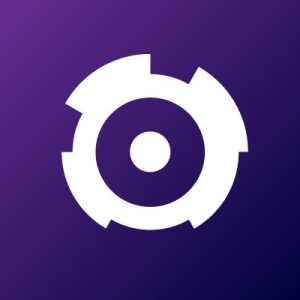What is our primary use case?
It is one solution for all monitoring needs. For one of the banks, we were using different products because each product had specific features. Then we came across ITRS Geneos, which provides comprehensive monitoring from the application level, and is very configurable and customizable. At the second bank, I was part of the team that onboarded the support from one customer or vendor to another. The third bank was evaluating multiple products and decided to use ITRS Geneos across the bank, replacing multiple solutions.
How has it helped my organization?
Using the solution we can set the sampling of the data every two seconds. This will ensure that the monitoring is done every two seconds, and the data will be refreshed and displayed on the dashboard or active console in real-time. The solution's default is two seconds but can be reduced further if needed.
We aimed to detect any issues or outages before clients reported them by using Geneos or the monitoring tool. Our goal was to be 100% successful, and we rarely heard about customers raising issues of instability or slowness where our tool was not able to find it first.
What is most valuable?
The application team in the banks always wants stability in the environment. They never want a product that assists in monitoring to make the system unstable or overloaded. I always appreciate Geneos' stability and ease of use. For example, during a disaster recovery situation, Geneos' configuration is so good that it will automatically handle most of the items a user would not need to do, such as exporting extra resources or configuring the monitoring tool. This is very convenient because if they feel like they need to do something extra during a disaster recovery drill or any other problem, they can focus on that without having to worry about the monitoring tool.
The company started producing its product in 1998. As a mature product, ITRS Geneos has had time to evolve and change along with its customers.
No product is designed perfectly or works well for all scenarios. Customers request features and the product evolves over time. The solution has a Custom Toolkit plugin to configure and customize our needs if nothing else can be monitored through the inbox.
ITRS Geneos is configurable based on the architecture and therefore provides lightweight data collection. There is one agent running on the machine which needs to be monitored, and the data the particular agent will collect is completely configurable. It can start from very basic monitoring, checking CP utilization and memory, and go to a much deeper analysis of the data by installing more plugins, like messaging queues, IBM MQ monitoring, and so on. One of the best features is that the solution is very configurable because it is an evolved product of over 20 years, and it can still run on machines that are not really good with system resources. These machines have less CPU and memory, and the solution can run on those machines also without taking much capacity and without slowing down the application itself.
What needs improvement?
A lot of solutions now use AI to predict and prevent failure. ITRS Geneos needs to evolve its prediction and prevention capabilities, as AI-based monitoring is becoming more important. Earlier, it was just alert-based. Most organizations look towards artificial intelligence-based monitoring solutions. Products such as Dynatrace rely more on artificial intelligence using algorithms to predict future failures, which is a plus point compared to ITRS Geneos. If the solution can use AI to monitor trends and provide analysis without having to wait for the threshold to be reached it would be very helpful.
Recently, the infrastructure has been moving from bare metal or a physical server to more cloud-based infrastructure. Being an older solution, the architecture is still perfect for physical machine monitoring. However, ITRS Geneos is improving and evolving in cloud-based monitoring. But there are some specific tools that are better than ITRS Geneos in cloud-based monitoring, which are strictly cloud-based. For the solution to stay relevant in the cloud-based monitoring environment Geneos needs more plug-ins with more features. Instead of offering clients workarounds, the solution should have a cloud-based out-of-the-box version.
For how long have I used the solution?
I have been using the solution for seven years.
What do I think about the stability of the solution?
One of the aspects I really liked about Geneos is that it is stable. It keeps the application stable where it is running and doesn't disturb the environment it is monitoring. This is a big plus point because the noise of monitoring can start to bother us and make our environment unstable. Geneos has an edge in that it is fairly stable and doesn't disturb the environment.
What do I think about the scalability of the solution?
The solution is scalable but only if it is done manually. It is not smart enough to scale itself based on need. The scalability must be handled manually, so the maintenance manager or support team will have to go and set up additional servers and gateways. ITRS Geneos doesn't have the intelligence to scale itself.
How are customer service and support?
The technical support is good. Customers can log in, create tickets, and follow up on them. They can also escalate tickets if necessary. There are escalation points in the system, and people to whom customers can raise tickets. The ticketing system is effective and efficient. Geneos does have experienced support people who can provide good answers. However, I have heard that they didn't get the proper response from them on some occasions. The key is that if a client can escalate the issue and request dedicated support to the particular client based on how the contract agreement is set up, Geneos has put more experienced clients on dedicated support.
How would you rate customer service and support?
Which solution did I use previously and why did I switch?
The main problem with our previous solutions was that the monitoring itself was not working at all. The other solutions didn't trigger the alerts. We didn't face this issue with ITRS Geneos. The installation of the monitoring tool itself failed or after being installed it didn't work. The product or the monitoring tool died for a few days and we had no monitoring which went unnoticed. We used different in-house tools based on whatever infrastructure was provided such as IBM or CompuCom. These solutions had a lack of application-related monitoring.
How was the initial setup?
After deployment, there is some work that needs to be done by individual application teams who want to use ITRS Geneos. For example, if there are 100 applications and 10 teams supporting them, then each team will need to evaluate how best to use the solution. ITRS Geneos provides professional services when it is deployed at an organization. Organizations often look for professional services during deployment because these professionals can provide the best configuration for the organization. Usually, an organization will take a professional services contract for six months, one year, or two years, depending on how fast they want to deploy their new application. Geneos provides these professional services, which makes the deployment much easier and quicker. If they didn't provide these services, it would be very challenging for the application teams to implement themselves.
On average, deployment can take anywhere from three to six months for multiple teams to fully switch over to ITRS Geneos and stop using their previous solutions.
The gateways are the core components of the Geneos architecture. They act as the nervous system of the software, collecting data from various sources and sending it to the other components for processing. The gateways are deployed on-premises and are designed for ITRS Geneos. The gateways are deployed across the regions to increase residency. The deployments are implemented one time and then the upgrades are pushed through orchestration tools. The UI part of the thin client is pushed as any application software on our desktops from the server. Any new upgrades are pushed either through the Orchestrator tool at the server level or the Windows-based tool for updates or patching.
Usually, when a bank starts accepting or starts migrating from other tools to Geneos, there is a team of five to seven people who work on deployment, which is the engineering team or the people who are actually working on the ground; maybe a couple of project managers in the different regions working along with other projects, pushing this project as well. However, after the deployment is done and the user community gets knowledge and awareness of this solution, we slowly see banks dismantle this team. This team is no longer required since application teams are autonomous and can get help directly from the support. Depending on the organization's size, our bank had a team of seven people set up with project managers and professional services colleagues in Europe, Asia, and America. The deployments usually have a centralized team to support all of the regional teams. The user teams or application teams became more hands-on over time and could manage the tool themselves. The team of seven people was usually dismantled and only one or two people who were subject-matter experts were left to support when required.
What about the implementation team?
The implementation was completed in-house with the help of ITRS' professional services team.
What was our ROI?
We were definitely successful in reducing the number of severe incidents. Our targets were to reduce the number of high-severity incidents, which occur when there is a delay in noticing or finding out about an incident, and then the customer raises it to us. By detecting and at least providing a workaround or fix before the customer notices, we improve our KPIs by reducing the number of high-severity incidents. That is what we see as a return on investment because we avoid the penalty by addressing the incidents quickly.
What's my experience with pricing, setup cost, and licensing?
The pricing is based on a deal that is evaluated based on future utilization and other components. The organization is not just purchasing a license for the product, but also managing services and professional services from ITRS. Another factor is if the implementation is going to be in production, non-production, or both.
Which other solutions did I evaluate?
I work with other products like Dynatrace and they are lacking in that they have a minimum interval and are still evolving to increase their real-time monitoring. However, they are working on specific features to improve that. Currently, they don't have the real-time monitoring that ITRS Geneos has.
When we were evaluating or comparing other products, we found that some products for installation and data collection require another Java virtual machine. The base was set up as a Java virtual machine on the client machine and then extracted the data collection. ITRS Geneos directly uses operating system calls to fetch data, so it doesn't need another layer or another software installed. With other solutions, it becomes difficult sometimes because a Java virtual machine itself requires some resources, CPU, and memory. This can cause delays or affect the actual application running.
There was a comparison going on between BMC tools and ITRS Geneos. The bank's strategy was not to rely on one tool but to use ITRS Geneos for critical applications that require timely messages, instead of relying on the in-house monitoring tools. Banks don't mind paying the license fees for the solution instead of using the infrastructure-provided monitoring tool or custom in-house builder monitoring tools.
Open-source tools have become more popular in the last 5 to 10 years. Linux, for example, comes with Prometheus, a monitoring tool. However, these open-source tools are not suitable for global monitoring and cannot be used across the bank. We cannot create a dashboard out of it where it links multiple applications hosted on different environments and different kinds of applications. We needed some sort of proprietary tool or a license-based tool that can be used as a global tool for the whole department, or for the whole BU, not just specific to the product or applications.
What other advice do I have?
I give the solution a nine out of ten.
ITRS Geneos has many plugins that are specific to monitoring, such as file transfer monitoring and log file monitoring. As a result, it has become very versatile and can be used for every application in a bank. We use the solution for critical business applications where even a single second can make a difference, such as trading. The trading-related critical applications we use are the bank's three platinum applications. They have plugins to monitor other products as well, so we monitored everything using ITRS Geneos.
The solution needs a minimum amount of maintenance, as new versions will be deployed and works will be fixed. Therefore, it is necessary to have one or two resources who can manage the maintenance. Over time, if a new version is released, it needs to be deployed. This is why it is important to have a team who monitors whether an upgraded solution from ITRS is delivered and whether we are using an older version. We need to keep in check and work with the vendor to ensure that we are up to date. This requires some level of maintenance, mostly to upgrade to the latest version with new features and bug fixes.
Our deployment model is: one server, with 16 CPUs and 64 gigabytes of RAM, can monitor 300 physical servers or 300 servers. This way, the number of servers required for monitoring is based on the number of servers and applications in the organization. For example, if an organization has 1,200 servers, it will need four primary gateways and four backup gateways, for a total of eight servers. This is a manageable number, as it can monitor 1,200 servers without using too many resources.
If we are looking for a single solution that can meet the needs of our entire organization, Geneos is a good tool. However, if we are happy to deploy multiple solutions for different monitoring needs, applications, and businesses, those solutions are available. It may be that we can choose different solutions, but the other solutions are only good in some specific areas. If bank strategy or organization strategy dictates that we have one tool across the organization, then ITRS Geneos is best in that case because it is one that is very customizable and very much configurable based on different needs.
Which deployment model are you using for this solution?
On-premises
*Disclosure: PeerSpot contacted the reviewer to collect the review and to validate authenticity. The reviewer was referred by the vendor, but the review is not subject to editing or approval by the vendor.






